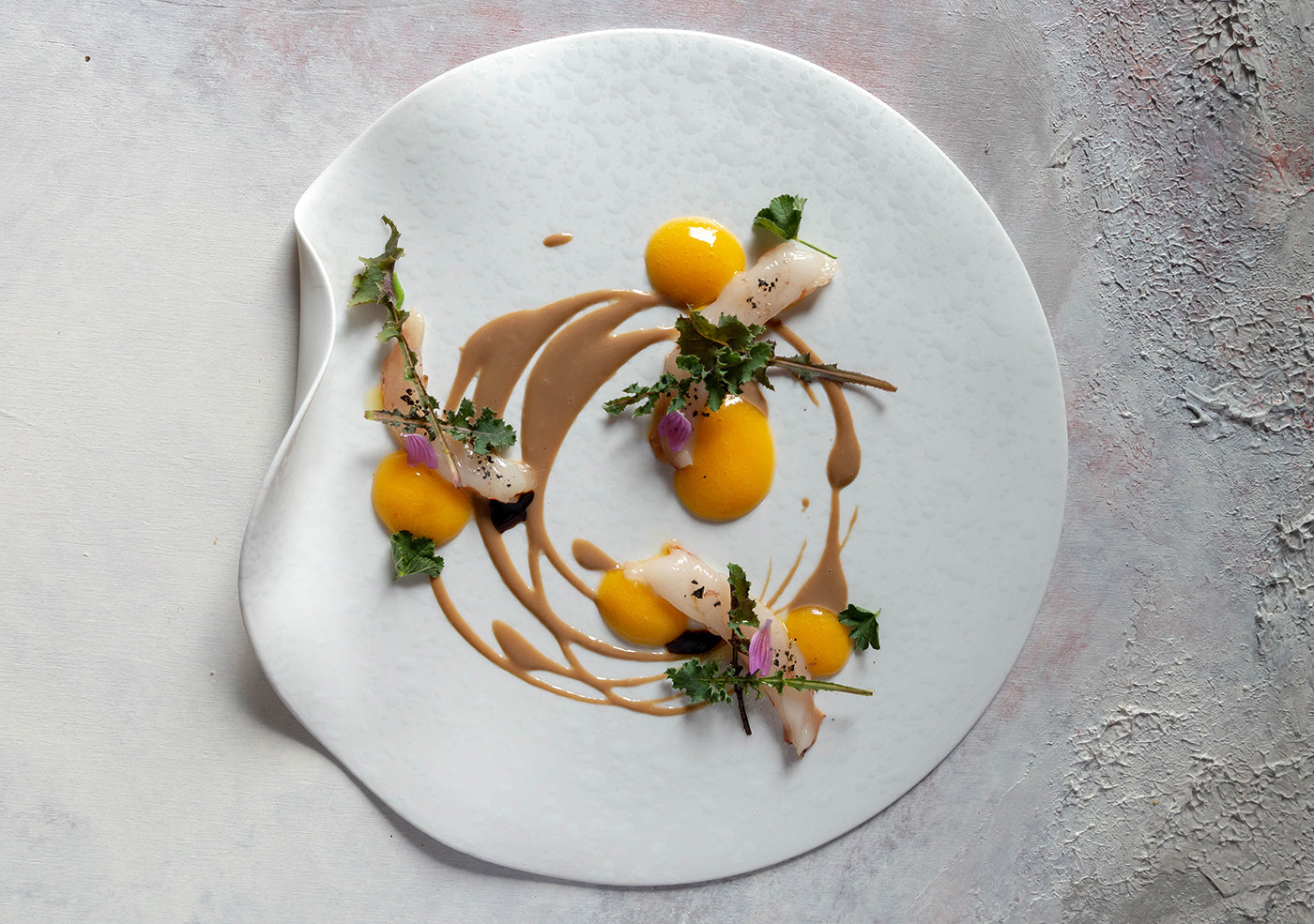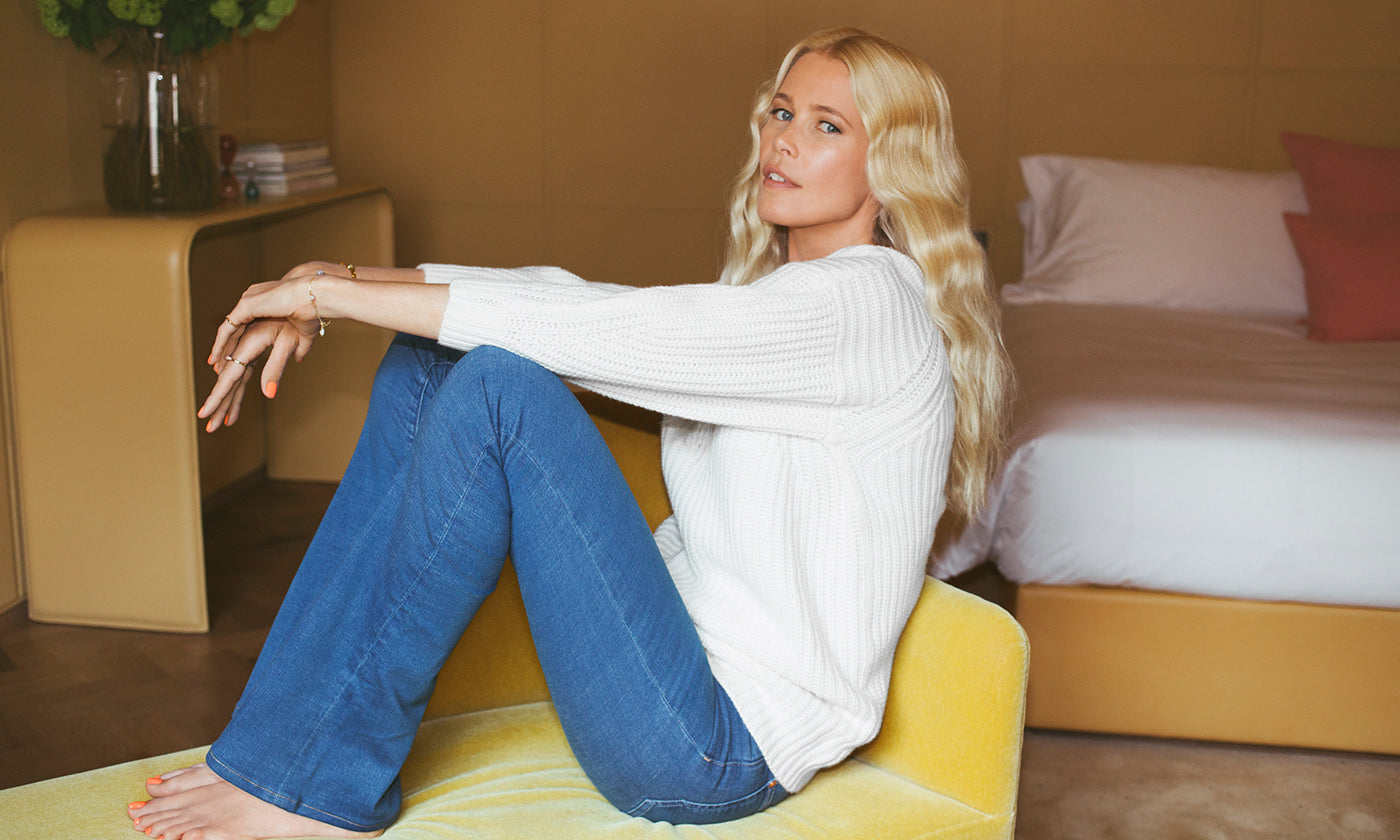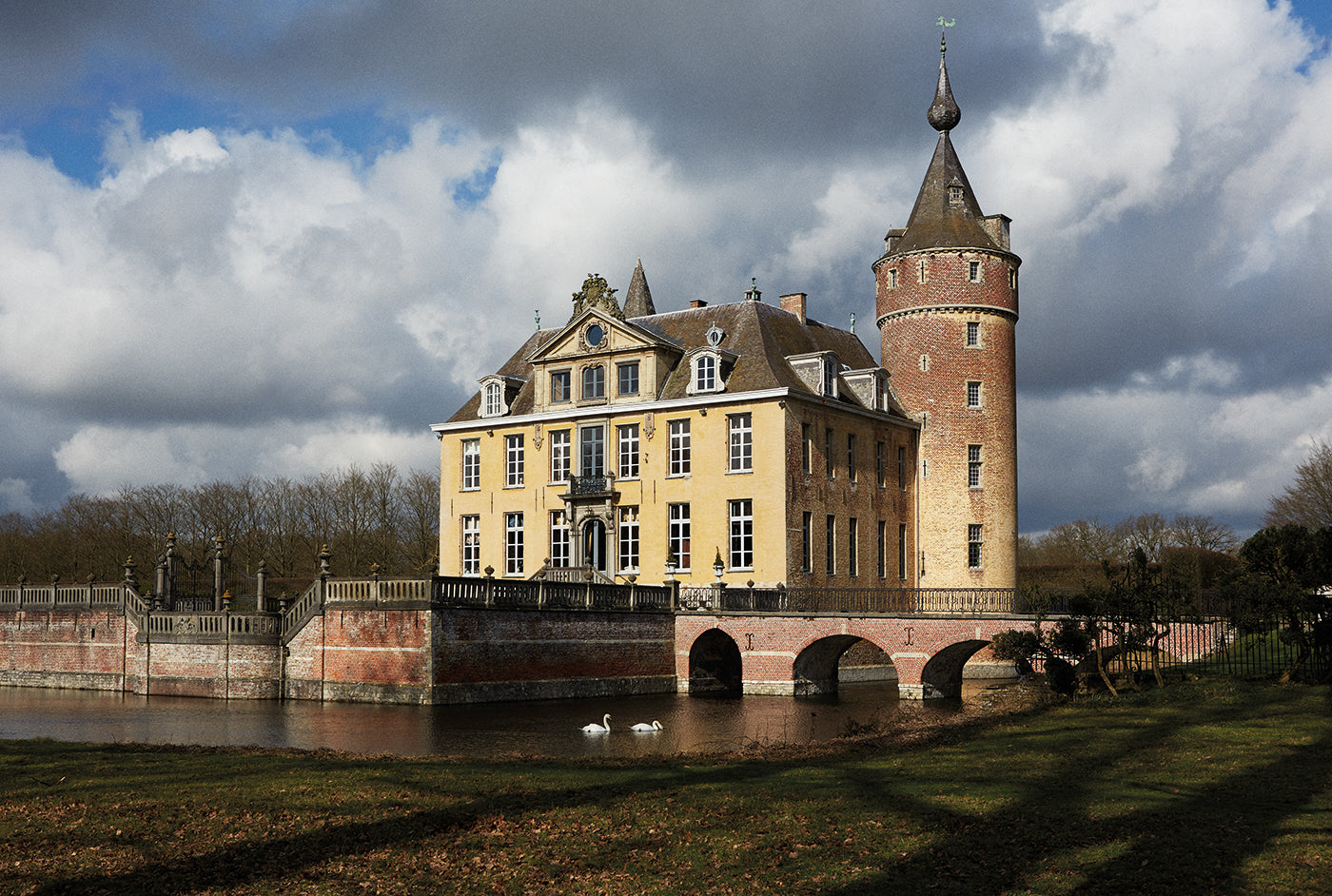
Translating Style From the Kitchen to the Studio
In Tuscany, Luca Rosati draws on his years as a professional chef to inform the clean, bold images he creates as a food photographer and stylist
During the 15 years that he worked in kitchens in his native Italy and abroad, Luca Rosati didn’t see himself as just a chef: he thought of himself as an artist, because he felt like one. “It is the chef who creates his style,” he explains. “I always thought that my dishes must have a strong impact.” That simple idea has carried Rosati from the kitchen to the camera. in his current role as a food photographer and stylist, he makes an impact through the way he plates and frames each dish. “Photography has to enhance the ingredients, the combination, and the complexity,” he says.
Born and raised in Tuscany, Rosati developed a passion for photography. It was during his trips to Japan that he began to make the connection between photography and food styling, he says, “I started taking pictures of food to understand the care (Japanese chefs take) in preparation, presentation, and skills,” he says. “I’m still fascinated by their style.”

The pumpkin and Parmesan ravioli mentioned in the text. (Photo: Luca Rosati, Story on a Plate)
His own approach is clean, minimal, and bold. In the header image we see a lightly coated shrimp enlivened with a mango sauce and liver. In another photo we a see pumpkin, decorated apricot, and parmesan ravioli with lumpfish roe and macaroons. Light is at the center of Rosati’s style: it “unveils details,” he says and creates dimension. He describes his process as “studying creativity”—he combs through books, the internet, and social media, using his research and curiosity to see both his work and everyday life “in another light.” When he arranges a plate of food, he begins by selecting the number of ingredients, and then the colors and the surface and background. “The selection of the plate’s material has become an essential element of my style,” he says.
And sometimes, the plate isn’t even a plate. For his ‘Knife Plate’ project, Rosati photographed a series of dishes on chef’s knives. The idea was born in his kitchen when he was using his knife to make a tartare, “and the knife naturally became the plate,” he says. After discussing the project with other chefs, he photographed the work of six of them, with each dish made with the knife that became its plate.

A perfectly imperfect plate of agretti. Rosati chose this dish, which was made by Michal Joniec of Slowburn Ceramic, for its colors and irregular surface. (Photos: Luca Rosati, Story on a Plate)
When Rosati began working as a chef, he used “complex and rich ingredients and several combinations of flavors all on the same plate,” he says. “Today, I use three to four ingredients for a perfect combination of taste, flavors, and presentation.” That reduction has a parallel in Rosati’s work as a photographer and stylist: today, his photographs entail fewer ingredients and props. “Lots of stylists use too many compliments and props, often distracting the viewer’s attention from the main dish,” he explains. “I decided to eliminate all the superficial elements only to focus on the ingredients and the meaning of the dish.” The plate itself, he says, is “the tool to create a harmonic composition,” and for that reason, he has placed increasing focus on using handmade ceramics in his photographs.
In turn, styling and photographing food has changed the way Rosati thinks about it. “It helped me to give more value to the ingredients, and to know how to enhance them with colors and shapes,” he says. “Food is important. It is our source of life. It shouldn’t be wasted. It should be loved.”
This story was originally featured in Story on a Plate and the text was written by Rebecca Flint Marx.


